Scientists propose using changes in the distance from the Earth to the Moon and measured by lasers as a way to detect the phenomenon of gravitational waves. Plus, JWST is working, ExoMars is at risk, and in this week’s What’s Up, we learn about looking for zodiacal light.
Podcast
Show Notes
ExoMars to no longer include Roscosmos partnership
- ESA suspends work with Russia on ExoMars mission (Space News)
- “Roskosmos” will cope with the organization of the mission to Mars, said Rogozin (RIA Novosti)
Eugene Parker passes at 94
- NASA press release
- We Booped the Sun (The Atlantic)
JWST brings universe to focus
- NASA press release
Ocean Light Pollution a Factor in Marine Dwelling Organisms’ Behavior
- Even the sea has light pollution. These new maps show its extent (Science News)
- “A global atlas of artificial light at night under the sea,” T. J. Smyth et al., 2021 December 13, Elementa: Science of the Anthropocene
Using the Moon to detect space-time changes
- Universitat Autònoma de Barcelona press release
- “Bridging the μHz Gap in the Gravitational-Wave Landscape with Binary Resonances,” Diego Blas and Alexander C. Jenkins, 2022 March 11, Physical Review Letters
Saturn winds explain why Saturn’s day do
- Saturn’s Powerful Winds Explain Changes in the Length of Its Day (Eos)
- “Saturn’s Weather-Driven Aurorae Modulate Oscillations in the Magnetic Field and Radio Emissions,” M. N. Chowdhury et al., 2021 December 28, Geophysical Research Letters
What’s Up: Zodiacal Light
- Zodiacal light: All you need to know (EarthSky)
- How to See and Shoot the Zodiacal Light (Sky & Telescope)
Transcript
Today is a day of many different kinds of news – good and bad – all mixed together.
We have news of JWST actually working and news of ExoMars having more problems that really aren’t its engineers’ faults.
We have light pollution and science we can do with lasers shot at the Moon.
And we have our weekly What’s Up segment, with instructions on how you, too, can study zodiacal light, that mysterious glow that Brian May investigated to get his Ph.D.
All of this and more is coming at you, right here on the Daily Space.
I am your host Dr. Pamela Gay.
And I am your host Erik Madaus.
And we’re here to put science in your brain.
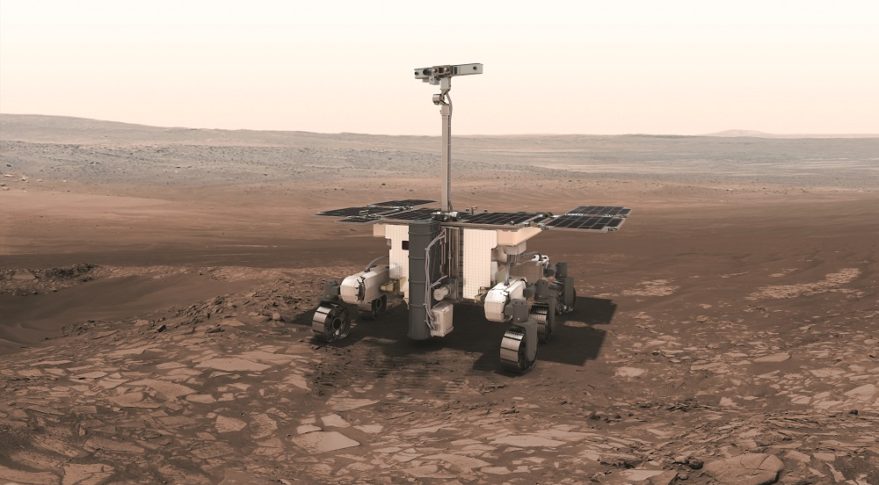
As an astronomy and space exploration show, we know there are going to be days when we have to cover bad news. Rockets explode. Funding gets cut. Beloved spacecraft die. I honestly had never expected that new and evolving wars would disrupt the decades-long collaborations that bind the global space community together.
In an announcement this morning, March 17, director-general Josef Aschbacher from the European Space Agency (ESA) made it clear that ExoMars isn’t going to proceed as planned. He said it was “practically impossible and politically impossible” to continue work with Roscosmos on ExoMars. NASA wants to help, but even then, the quickest the mission can launch is 2024. This date is also when it could happen if cooperation with Roscosmos is possible again. The director also stated that a 2026 launch would be “very challenging, realistically” if major changes were needed to put the rover on a NASA-constructed landing platform.
ESA’s director of human and robotic exploration, David Parker, said: Mars is 4.5 billion years old; we just need to wait a few more years.”
ExoMars has a lot of Russian components besides the launch vehicle. They built the lander which would have delivered the rover softly to the Martian surface, a critical part of the whole mission. In addition to the lander, several experiments on the rover itself are Russian, and the critical radioisotope heaters that will keep the rover warm during the Martian night are also made in Russia.
Roscosmos, for their part, stated that they would use the Proton-M rocket which was going to launch ExoMars 2022 to launch a satellite for the Russian government. They also said they would do their own Mars mission using the new Angara rocket from Vostochny and a newly built landing platform similar to the one they built for ExoMars.
Today isn’t a good day in space science.
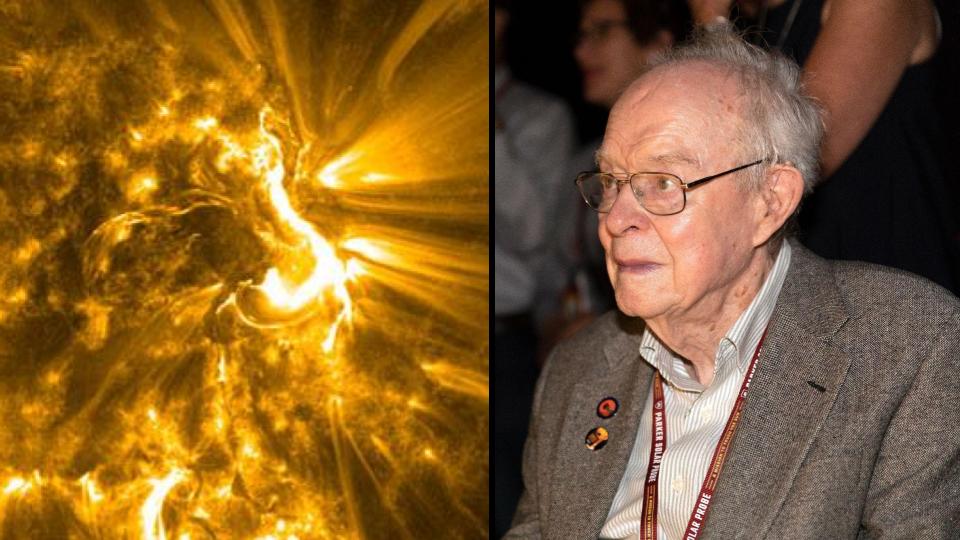
At the age of 94, the still-active heliophysicist Eugene Parker passed away. The Parker Solar Probe, which launched in 2018, was named after him, and I think everyone is grateful that he was able to see it reach out and touch the Sun. That namesake probe has gathered data that showed that Parker’s work in the 1950s built an accurate theoretical foundation for our understanding of the Sun.
While working at the University of Chicago in the 1950s, Parker developed theoretical models – in a day before computers – that introduced supersonic solar winds and predicted the spiral shape of the Sun’s magnetic field in the outer solar system. This work also helped explain how the Sun rotates at different rates at different latitudes.
In the late 1980s, at an age when many would be retiring, he instead worked to solve the solar corona heating problem. For reasons that aren’t fully understood, the Sun’s outer atmosphere is far hotter than predicted. Parker postulated that small nanoflares on the Sun can take place where magnetic fields reconnect, and these flares release energy that heats the corona.
In 2017, when Parker was 90 years old, NASA announced he would become the first living person to have a spacecraft named after him. I think it is safe to say everyone in the space community is grateful he was able to see the mission show so many of his theories are correct.
Rest in science, Eugene Parker.

The story of space exploration is written one lifetime and one spacecraft at a time. The Parker Solar Probe is in the middle of its exciting solar exploration. The Hubble Space Telescope is somehow hanging on at an age none of us expected it would ever see. At the same time, the JWST is just coming to life.
On March 16, NASA released the first image from JWST that began to hint at what this mission is going to be able to do. In this image, the very red star 2MASS J17554042+6551277 is brought into focus. With a V magnitude of about 11, this star can be seen in a good backyard telescope with a camera. What can’t be seen without a massive telescope are all the fuzzy galaxies that fill the background of this image.
The six thick diffraction spikes are a combination of the three-strut secondary mirror holder and the angled edges of the primary mirror. The two smaller spikes in the middle are from the center strut which is straight up and down, not angled like the other two.
Early comparison between galaxies in the JWST field and images by the Dark Energy Camera with the four-meter Blanco telescope in Chile show that putting a 6.5-meter telescope above our atmosphere is indeed going to give us a sharp new view of the universe. We are still several months from JWST being used for research, but it is looking like this telescope will have arrived very late but with fabulous potential for science.
And it may be a good thing we’re putting more telescopes in space because it turns out even the Earth’s oceans now have light pollution.
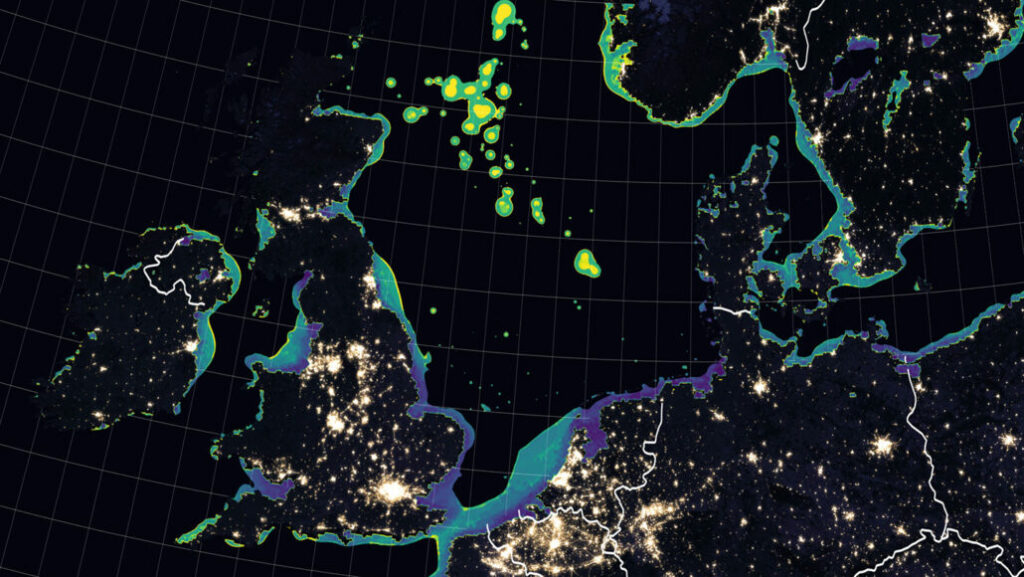
If you’re watching our show, chances are that you’ve looked up a light pollution map at least once or twice. A good dark-sky site can make all the difference when you want to do some nighttime observing, but finding one can be no easy feat! You might think a simple way to escape the glare of city lights would be sailing out on the water some clear evening, but recent research has revealed that we’re making the future – and the oceans – so bright that even phytoplankton want to wear shades.
Light pollution is a major problem for human populations the world over, but we’re beginning to learn that the glow of our cities, towns, and infrastructure even affects life beneath the waves. Factors like the time of year or sedimentary runoff into water sources cause different species of plankton to react to environmental light in different ways. To account for this, researchers focused primarily on copepods — tiny, plentiful shrimp-like plankton that form a significant piece of numerous marine food webs.
Copepods, like many other species of plankton, utilize the light of our day/night cycle to inform their daily journey from the deep to the top of the waves; rising from the ocean floor during the night, then diving to seek safety from surface predators as the Sun begins to light the upper layer of the sea. But the light from human infrastructure is affecting those biological cues, causing a disturbance in copepod behavior across an area of our oceans that is roughly the size of Mexico.
The deeper you dive, the less impact our global brightness appears to have – biologically impactful levels of light pollution begin to level off around 50meters deep – but even at twenty meters down, the affected areas only appear to shrink by about half.
Gaining an understanding of how human light pollution affects marine life is an important step forward on the path to determining our overall impact on the global ecosystem, something this research is well-equipped to help us with.
Next up, we move from the microscopic to the macroscopic as we discover what our own Moon can tell us about the structure of the cosmos.
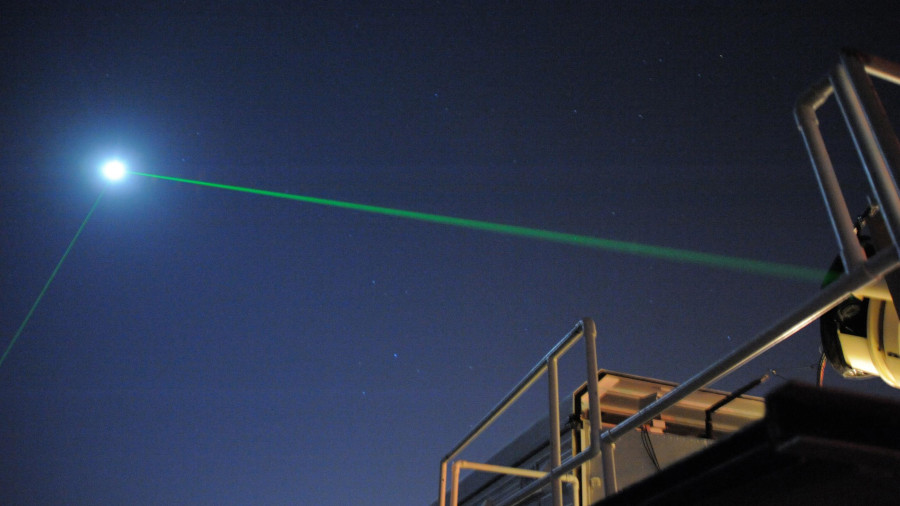
Sometimes, I read journal articles and press releases and think, “That is madness. It works, but it is madness.” But as the Cheshire cat once said, “We’re all mad here.”
In a new paper in Physical Review Letters, Diego Blas and Alexander C. Jenkins propose using the Moon to detect the small changes in the structure of space that occur when a gravitational wave passes through our part of the universe.
Gravitational waves are created when masses merge, explode, or otherwise radically change their combined mass and energy. They can be generated by orbiting high mass objects like neutron star pairs, and theory says they also reverberated through the early universe. Just like different radio electronics are needed to detect AM, FM, and shortwave radio, different setups are needed to detect gravitational waves generated by different sources. Currently, Earth-based detectors, including LIGO and Virgo, can detect waves from merging neutron stars to small and intermediate-mass black holes.
Researchers would also like to be able to detect gravitational waves generated in the early universe that are still traveling through space. Up until about 400,000 years after the universe formed, space was opaque to light. We’ll never be able to see with a telescope what happened in those early millennia. Gravitational waves, however, may be out there carrying information from that time. And, if they were on the radio dial, they’d require tuning into the microhertz part of the dial.
And if those gravitational waves wash over the Earth-Moon system, they just might change the distance to the Moon enough that we’re able to detect it and detect the subtle changes to the Moon’s orbit. We may also get further information by observing other well-understood systems of two objects.
According to Blas: This coverage is vital to obtaining a precise image of the evolution of the universe, as well as its composition. Covering the microhertz frequency range is a challenge, which now may be feasible without the need of building new detectors, and only observing the orbits of systems we already know. This connection between fundamental aspects of the universe and more mundane objects is particularly fascinating and can eventually lead to the detection of the earliest signals we have ever seen, and thus change what we know about the cosmos.
To make this a reality, regular laser ranging of the Moon and monitoring of its orbit will be required. We have the ability. We just need the time, money, and expanded facilities.
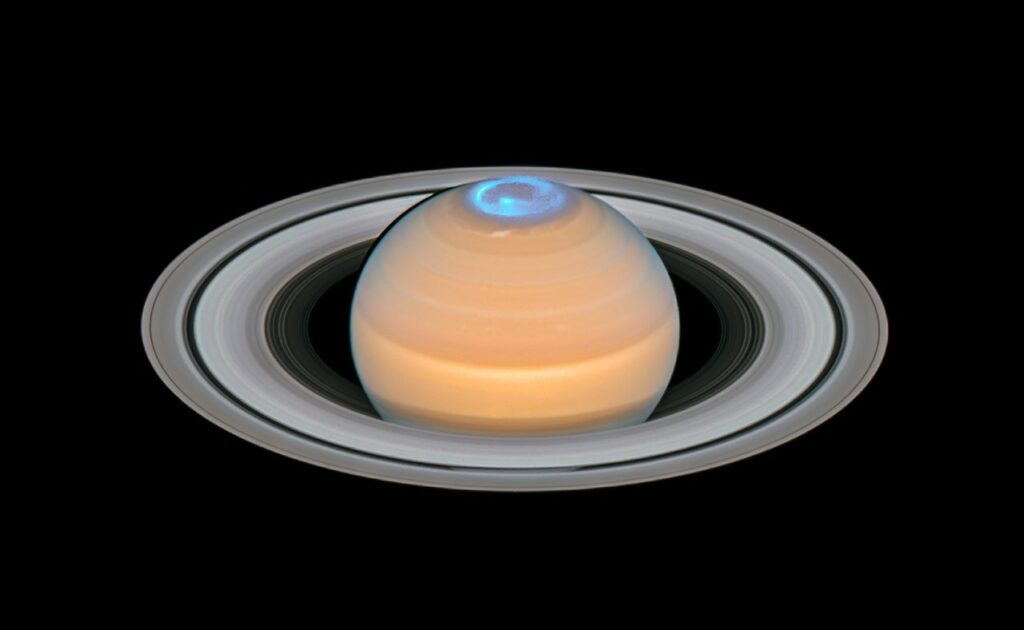
It’s amazing what a little basic physics can do with a rocky world. Now, those gassy ones, they and their lack of solid surface are a bit more of a challenge.
Saturn’s rotational period has confused scientists since the Voyager missions flew by it in the 1980s. At that time, Saturn’s day was calculated at just over ten and a half hours. When Cassini entered orbit twenty years later, it calculated a slightly shorter value.
There are two possible theories to explain why this happens. One had to do with the magnetosphere, and Saturn has a very strong one. The other theory is about its winds.
In 2017, a team from the University of Leicester with first author Nahid Chowdhury used one of the Keck telescopes to measure the speed of Saturn’s winds through the spectrum of a specific hydrogen ion. It turns out that they spin really fast – 7,000 kilometers per hour. This incredible speed changes the magnetosphere enough that it distorts the radio signals the scientists had been using to measure Saturn’s rotational period. So parts of both theories were right in how the observed change in the rotational period happened. This research was published in Geophysical Research Letters.
What’s Up

This week in What’s Up is a phenomenon called the zodiacal light. If you have access to dark skies, starting this coming week on March 20 and continuing the week after, you may be able to see it from the northern hemisphere. This is a relatively unique phenomenon, and you don’t need any special equipment to see it, just the unaided eye.
Zodiacal light is caused by the Sun illuminating dust in interplanetary space. This cloud of dust is in the plane of Earth’s orbit around the Sun, so it appears from horizon to horizon. In the spring, the zodiacal light is visible after sunset. In the fall, it’s visible before sunrise. It is best seen in the western sky of the sky in the spring, and the reverse in the fall.
The densest portion of the dust light forms a slight triangle-shaped light and has been called “false dawn”. In the modern era, it’s mostly washed out by city light pollution, which is why you need to go to dark skies to see it. In fact, it contributes to the sky brightness in very dark skies, making them brighter than they otherwise would be. Skyglow is also caused by different gases in the atmosphere scattering light. It doesn’t sound intuitive, but it’s how it works.
A related phenomenon is “gegenschein”, or “counter glow” in German, which is just a fun word to say. It’s also caused by sunlight reflecting off of dust particles but in the opposite direction as the zodiacal light.
Observations from Pioneer 10 showed that the interplanetary dust cloud may have come from the main asteroid belt and extends to two astronomical units from the Sun. The dust gets pulled into the Sun from radiation pressure, while new dust comes from asteroids and comets hitting each other and making many small pieces of debris. Astronomer and guitarist from Queen, Brian May, did his Ph.D. thesis on the zodiacal light, contributing to the science on the subject despite using 30-year-old data from before he started the band.
The Moon will be past full next week, so go out to a dark spot and try to spot this faint light. While you’re there, you can look at some deep-sky objects in your telescope. Milky Way season, when the best deep-sky objects will be visible, is starting soon. This time of year is when the dense core of the Milky Way is visible high in the sky during the evening in the northern hemisphere. A good place to start for deep sky objects is the Messier catalog, which we’ve talked about before.
This has been the Daily Space.
You can find more information on all our stories, including images, at DailySpace.org. As always, we’re here thanks to the donations of people like you. If you like our content, please consider joining our Patreon at Patreon.com/CosmoQuestX.
Credits
Written by Pamela Gay, Beth Johnson, Erik Madaus, and Lindsey Odom
Hosted by Pamela Gay, Beth Johnson, and Erik Madaus
Audio and Video Editing by Ally Pelphrey
Content Editing by Beth Johnson
Intro and Outro music by Kevin MacLeod, https://incompetech.com/music/


 We record most shows live, on Twitch. Follow us today to get alerts when we go live.
We record most shows live, on Twitch. Follow us today to get alerts when we go live.
Hello,
This comment is from the portion of the show discussing the Zodiacal light now visible in the west after sunset. Eric stated the possible source of the dust is from collisions in the asteroid belt. I was a little disappointed he didn’t reference a more recent theory published March 9 paper in the Journal of Geophysical Research which speculates the dust comes instead from Mars. A team of Juno scientists based the theory on visual recordings made by the spacecraft while on it’s way to Jupiter. Its cameras recorded over 15,000 events where tiny fragments of material were knocked off the spacecraft from collisions with dust. Based on where the collisions happened, they were able to determine the width of the dust ring. Then, given the orbit and influences of the Earth, Mars, and Jupiter, they theorized the dust must be coming from Mars.
I understand the main point of Eric’s segment was to let people know they can see the Zodiacal lights. I just think adding the origin of the dust could be from Mars would have made them even more interesting.
Thank you for putting on such a good show,
West Obering
You are absolutely correct, and we should have made a note of that research in our story. Here is our coverage of the original press release: https://cosmoquest.org/x/2021/03/nasas-juno-finds-earths-zodiacal-light-caused-by-martian-dust-particles/